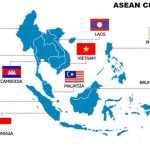
- In the last few years, relations between the U.S. and India have grown very quickly. This is mostly because of how well they work together on defence. During his recent trip, the US Secretary of Defence strengthened important defence relationships and moved cooperation forward in key areas.
- As part of the U.S.-India initiative on Critical and Emerging Technology (iCET) agreement, which was made public in May 2022, the visit led to an agreement on a road plan for defence industrial cooperation.
- The road map calls for more technological cooperation to help India improve its defence industry. While the goals align with India’s goal of becoming more self-reliant and less reliant on imports, they could also change the U.S.’s place in the larger strategic relationship between the U.S. and India.
There were two important parts to the trip:
- The military is working together more and doing new things with technology.
One of the most important things to do to improve defence ties between the two countries is to make a plan to encourage collaboration in the defence industry and speed up important co-development and co-production projects. This will help the defence sectors of the two countries work together better. - The launch of the Indus-X will give a new boost to defence innovation between the U.S. and India. It builds on the U.S.-India bilateral Space Situational Awareness arrangement signed in 2022, which promises to improve information sharing and cooperation in the space sector.
- New areas for space exchanges have also been found thanks to cooperation between the U.S. Space Command and India’s Defence Space Agency.
- India’s status as a “Major Defence Partner” (MDP) and the four foundational agreements it has made with the U.S. make it possible to share information and work together more often. Along with letting India join as a friend.
The Indo-Pacific region has a lot of
- During the 2+2 ministerial dialogue in April 2022, the U.S. secretary said that the defence ties between the U.S. and India were the most important part of their relationship in the Indo-Pacific.
- It talked about a lot of different things in the Indo-Pacific region, such as the People’s Republic of China’s coercive actions and Russia’s aggressive actions in Ukraine, which were meant to change the borders and weaken national sovereignty.
- It also talked about transnational problems like terrorism and climate change. When India and the U.S. look at the threats in the area as a whole, they both see China as a major problem. The U.S. put out a report called China’s Military Power Report 2022. The People’s Liberation Army Navy has the most ships of any navy in the world.
- As the Indo-Pacific region becomes more contested, China’s subsurface presence in the Indian and Pacific Oceans is expected to grow.
- Beyond the Indo-Pacific, the size of American investments in India is a good reason to think that Indian and U.S. companies will work together more in the defence industry.
- Behind this is almost a statement of support from the U.S. government, which is telling its companies to help India modernise its defence.In the long run, this could lead to at least three major trends in U.S.-India defence cooperation: the growth and development of an ecosystem of joint ventures between companies; the U.S. gaining a larger share of Indian defence manufacturing; and both sides removing barriers to co-development and co-production. In the iCET deal, it was said that a “innovation bridge” would connect defence strata-ups from both countries. This would be in addition to what was already in place.
Conclusion:
- The Defence Technology and Trade Initiative (DTTI) has been criticised for being too ambitious and stuck in a maelstrom of bureaucratic resistance, technicalities linked to sensitive technology transfer, and structural differences in how the India-U.S. define ecosystems work. Recent steps, on the other hand, are expected to get the DTTI off the ground by giving a boost to co-production and co-development in the defence sector. The amadou is the strengthening of the strategic relationship between India and the U.S. through the iCEt agreements.


![Himanshu Jain [UPSC topper 2019] Biography, Age, Family, Caste & More images-2B-252876-2529.jpeg](https://iasbio.com/wp-content/uploads/2020/11/images-2B-252876-2529.jpeg)



![Pratibha Verma [UPSC Topper] Book list, optional subject, Age, Family, Caste, Biography & More images-2B-252875-2529.jpeg](https://iasbio.com/wp-content/uploads/2020/11/images-2B-252875-2529.jpeg)









